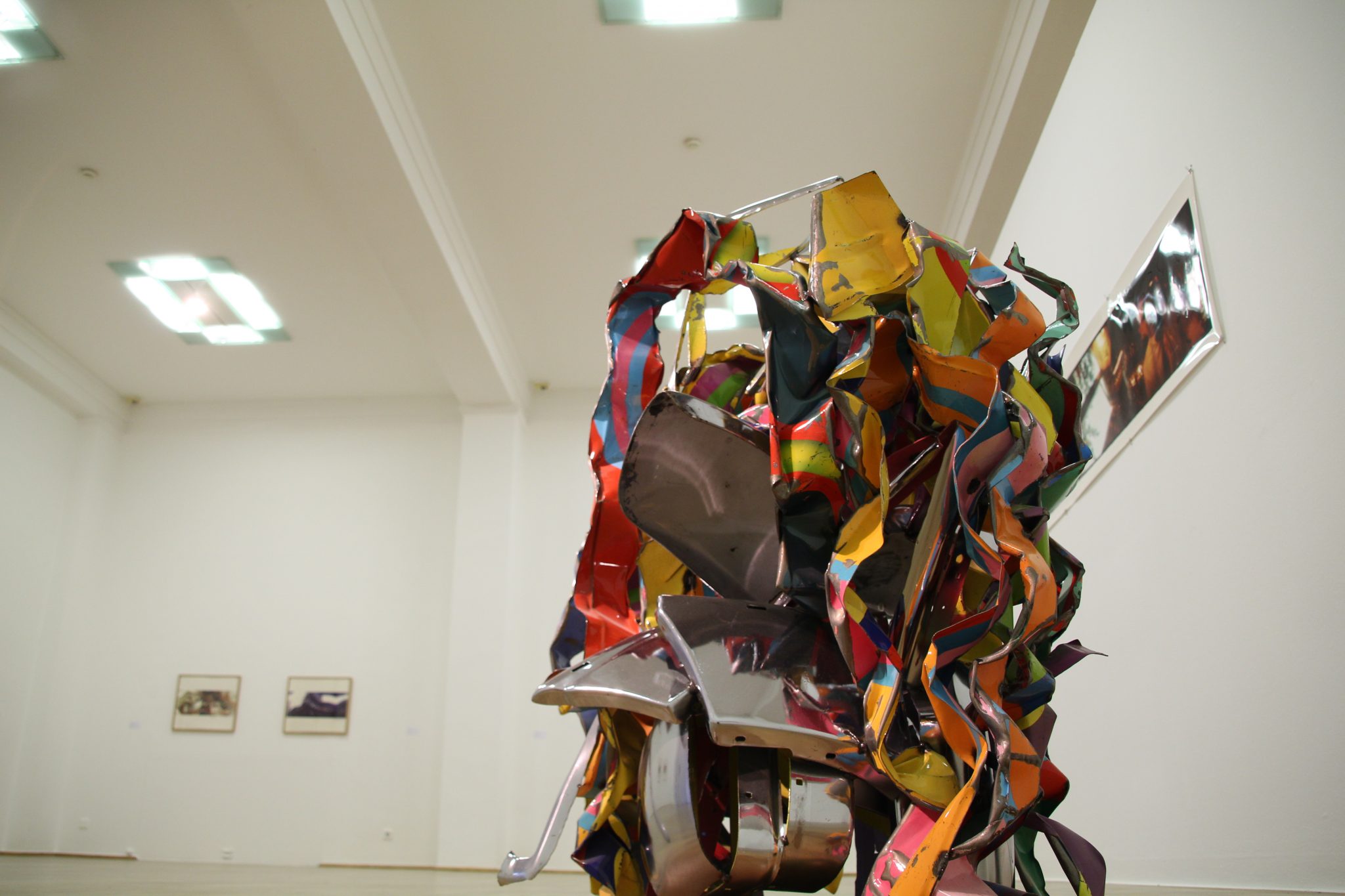Past exhibition
John Chamberlain. Bending spaces
26.08.2018 – 21.10.2018
The crumpled sculptures by the American artist John Chamberlain, welded together from deformed car body parts, revolutionized the art world back in the 1950s. Through the unusual use of industrially prefabricated materials and their completely free repurposing, he released new processes of artistic forms and a consumer-oriented aesthetic. At first assigned to Nouveau Réalisme, his work at the same time evinces relationships with Abstract Realism and Minimal Art, but ultimately asserts a great measure of autonomy in its form of expression. As early as the mid-1950s, he turned to the industrial scrap from cars, which he squashed, pressed into shape and welded together. Just as important as the form is the interplay of colours which make his works dazzle and sometimes bring them into a certain proximity with colour-happy Pop Art.
Right from the start, even the titles of the works mark stages of his life, encounters and also a confrontation with special topics. Chamberlain’s first work using car parts dates from 1957, after he visited fellow artist Larry Rivers on Long Island, where he ripped off the wings of Rivers’s Ford, which was quietly rusting away. Then he drove over these bits of scrap metal, before welding them together to form a dark structure. John Chamberlain worked rusty metal worked until it looked like a pile of crumpled paper. He turned shiny chrome into dignified sculptures and colourful car parts he put together to form colossal mural reliefs and colour plays. A little later, in the mid-1960s, Chamberlain also began to deal with foam (similar to that used in the building trade) and designed novel sculptures made of polyurethane foam, which he also cut, folded or made to look as it were fluidly melting. These works, absolutely unusual at the time, convey great randomness and spontaneity. Not long after, the French artist César (Baldaccini) was to work with this material. For Chamberlain, the integration of this material meant first and foremost an intensive exploration of the possibilities of form and material.
He was to maintain this process of exploration and experimentation throughout his life, and over time he developed a multitude of works and thematically closely linked series in which he worked and modified the automobile parts in a wide variety of ways. It was always coloured car body parts, both old and brand new, that he folded, bent, squeezed and crumpled, and which he thus subordinated to his will to change, resulting in mostly light looking, sometimes even humorous works. With his ‘Foiles’, designed from 2000 onwards, he finally created a series of sculptures reminiscent of crumpled, brightly coloured silver paper used for wrapping sweets. Chamberlain altered the scale effortlessly: from the crumpled miniature that took shape at his desk (often no higher than 10 cm) he finally created a monumental sculpture which provoked tension and surprise at the same time on the part of the beholder.
In addition to his internationally renowned sculptural work, Chamberlain occupied himself intensively with photography, a theme that will be extensively addressed and illuminated in the exhibition. Sculpture and photography interact directly with each other. Unlike the sculptures, which are positioned in their materiality, Chamberlain’s photographs are marked by great blurring and fleetingness. At the same time, they absorb the element of movement in space. Chamberlain himself put it in terms of ‘bending space’. One may think of them, even more readily than of his sculptures, as the spontaneous gestural structures of Abstract Expressionist paintings.
From 1977, Chamberlain used for this purpose a Widelux camera which had originally been developed for purposes of urban and rural documentation through panoramic images. Experimentally, he explored the possibilities that opened up to him while he led the camera with panning or jerky movements through space, setting a long exposure time in the process. The result was almost cinematic moments that allowed him to capture different perspectives in a single photo. Only schematically dies the beholder now recognize outlines, structures, colours or light, the movement capturing both space and time. Some of his photographic prints, which were later mounted on panels, also reveal motifs from his travels and his own biography (his studio, Broadway, the streets in Paris and Amsterdam). Chamberlain liked to call these photographs ‘self-portraits of my nervous system’.
The exhibition will feature an extensive set of original photos as well as some sculptures, which in turn illustrate the ambivalence between photographic impulse and sculptural effect. On display are works from the Chamberlain Estate, museums and private collections.
The exhibition is being staged in collaboration with the John Chamberlain Estate, New York.
It is sponsored by Kultursommer Rheinland-Pfalz.
Catalogue

IMG_0611
